Each of them had several pistols tied to her legs, the cartridges were transported in pants, and the dynamite matched the corset best. Women in revolutionary times were more deadly than many men.
A resident of the Kingdom of Poland, Mr. W. Kaliski, had the opportunity to spend August 15, 1906 in Warsaw.
It was then that he had the opportunity to see what an inconspicuous and inconspicuous Polish patriot could do in a fight with the tsarist patrol. The man later noted:
It was unusual to deal with the patrol on the corner of Gęsia and Dzika Streets. A young, beautiful lady approached the policeman, accompanied by two soldiers, with a smile on her face.
When she was about two paces from the patrol, the combatant fired five shots, and after a while the policeman and soldiers were stretched out on the pavement . Neither of them were alive. An approaching soldier from a flight patrol shot the girl, but she crawled almost on all fours and quickly disappeared in Kupiecka Street. The chase had no result.
It is true that no one knows today who the "young, beautiful maid" from Kaliski's story was, but you can be sure that she did not feel lonely in the male company of PPS fighters and several smaller organizations, then spreading anti-Russian terror in bulk in the Kingdom of Poland.
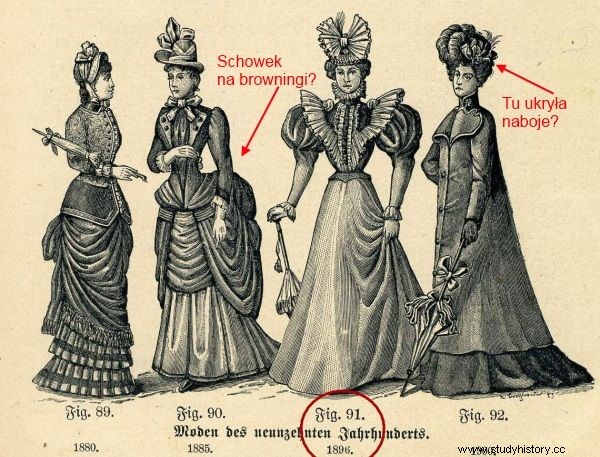
The women's clothing at the turn of the 19th and 20th centuries turned out to be a perfect hiding place for carrying weapons, ammunition and explosives.
Kaliski mentions one more case, this time an elderly, elegant lady which with the revolver taken out of her purse, placed the body district at Solec Street. However, there were many more similarly hot girls back then.
Impuls from the East
The impulse came from Russia, where terrorist socialist organizations had been raving around for twenty years, going - by the hands of a Pole - even to try to kill the tsar.
Women acted on an equal footing with men there, including the right to throw bombs . Being aware of this, Polish women did not want to be worse. When the revolutionary chaos of 1905 also appeared on the Vistula River, queues of women demanding weapons began to form at the party militias, of which at least several dozen did not even think to be limited to carrying it in the corners of their underwear - wanted to personally participate in the attacks. And they did.
One of them was Wanda Krahelska - an interesting figure, a noblewoman, a member of the Council to Aid Jews "Żegota" during World War II, and a relative of Krystyna Krahelska, poet and prototype of the monument to the Warsaw Mermaid. In 1905, her fiancée was tortured and killed at one of the police circuses.
Tormented by the desire for revenge, she joined the Combat Organization of the PPS, where she was soon ordered to execute the Warsaw Governor General Giergiju Skałonie.
Although the loads she had thrown, they missed and did not do Skałon any serious harm, but they did devastate the surrounding houses, mutilated soldiers from the bodyguards and an accidental witness, a little girl from the basement opposite.
The next day, "Morning" reported:
The bombs, presumably, exploded behind the carriage and as a result their action was directed mainly against the windows of the houses at ul. Natolińska and Koszykowa. Especially that bomb that exploded on the street corner was extremely powerful and caused the windows to break in houses 13b, 13c and 15 on Koszykowa Street and injured two Cossacks belonging to the general's escort, whose hats fell off .
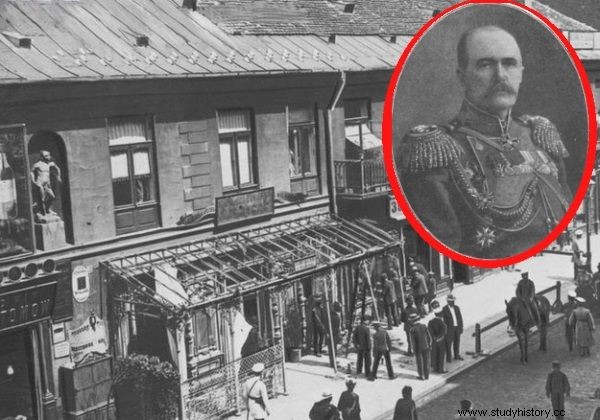
Russian dignitaries did not feel safe in Poland. In practice, there was a constant war in the country, and each of the tsarist uniforms had a shooting target on their foreheads. The photo shows the place of the attack on Georgy Skaon.
Bombs and cyanide
Krahelska was not alone. She was accompanied by two teenage workers, Zofia Owczarkówna and Albertyna Halbertówna, of whom the former later developed a quite impressive biography - interestingly enough - always very closely intertwined with the person of Skaon.
A few months after the action on ul. Natolińska, took part in another attempt on his life, this time in Vilnius. Even if the action didn't work out, she didn't give up.
In the fall of 1909, Mieczysław Mańkowski came up with the idea to lure Skaon out of the Belvedere, who was afraid for his life, by killing his "right hand", General Uthoff.
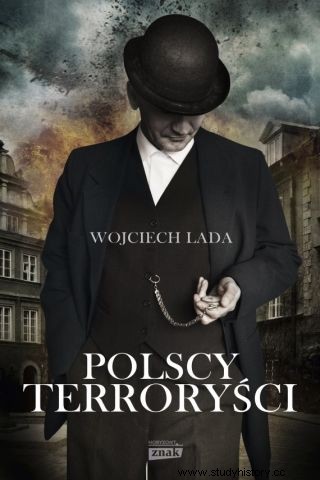
The author of the article also published the book "Polish terrorists" (more about it on the publisher's website). If you are not afraid of controversial topics, it is definitely worth reading!
Eliminate Skim
Warsaw was chosen as the place of action again, where on October 10, from a tenement house at ul. Świętokrzyska, the fighters threw several bombs on his car.
"Warszawskij Dniewnik" reported:
As reported, General Uthoff's car crash resulted from a bomb explosion. According to the testimony of some witnesses, the bomb was thrown by an unknown name by a woman on the balcony of the opposite house ; she lived there under a forged passport in furnished rooms, after the explosion she fled.
The bomb hit the left side of the car (...) fortunately the bomb met resistance in the steel frame, and thanks to that the passengers avoided death. The blast wave bounced off the frame and swept away pedestrians on the left sidewalk.
Uthoff survived because he was not in the car at the time. In the end, he survived and Rocks, only to die five years later of purely natural causes. However, the same cannot be said of another Polish terrorist, Faustyna Morzycka, who, together with Owczarkówna, threw bombs from an apartment on Świętokrzyska Street.
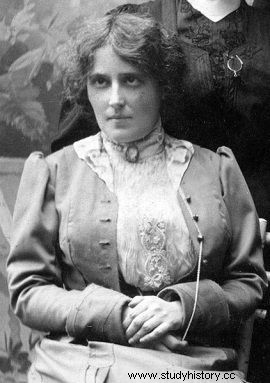
During the "bomb throwing course for women" organized by the Polish Socialist Party, Faustyna Mokrzycka did not impress the instructors. Nevertheless, she decided to become a terrorist.
It is true that she managed to escape without major problems and find shelter outside Russian jurisdiction in Galicia, but soon, unable to cope with the remorse for the death of accidental victims, she took cyanide . Interestingly, everyone except herself realized that she was completely unfit for a terrorist job. After all, she was the prototype of Stanisława Bozowska from Żeromski's "Strongwoman", as well as his close friend, used to fighting in a completely different field.
Another friend of hers, also the eminent writer Gustaw Daniłłowski, was wringing his hands when he saw her in Krakow during a "bomb-throwing course for women" classes organized by the Polish Socialist Party. His friend Walentyna Nagórska wrote later:
Daniłowski told how surprised he saw her on a bomb throwing exercise and said it was not for her delicate hands and robot nerves . However, she abandons her educational work to be placed in more dangerous posts .
Benefits of Fashion
In the first decade of the twentieth century, girls were eager to shoot, they produced bombs in laboratories, formed virtually the entire logistic base of socialist militias . Most often, however, they were used to transport the entire arsenal necessary for a terrorist job. And it was not about fear or physical strength, but about ... natural conditions and fashion. One day Władysław Dehnel noticed:
The most spacious companions were skinny and tall companions. For example, Comrade Morawiecka was the most powerful companion I have ever known. Her husband told her that his wife takes shape when she is wearing a pud (approx. 16 kg) of tissue paper .
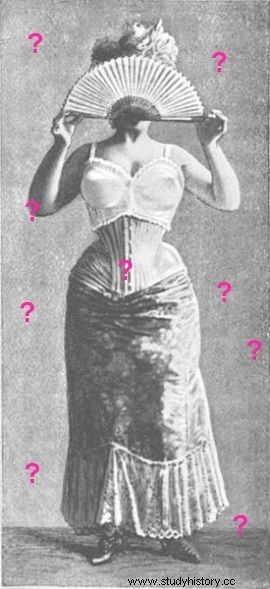
How many sticks of dynamite can fit in one corset? Polish terrorists knew the answer.
And what he said was best explained by Aleksandra Piłsudska:
Fortunately, we couldn't complain about the fashion of that time. Ladies wore large coats, capes, skirts and dresses, bras and bras that made it easy to hide many things. There was no question of transporting weapons in suitcases or trunks. (…)
So, for example, a woman in a long dress could easily carry two or three body-tied Mausers along her legs. Revolvers and ammunition were sewn into wide stripes, which were put under the clothes. Dynamite was perfect for the corset.
The future Marshal argued in her later memoirs that the party did not agree to the participation of women in direct combat. But she knew well that was not true. She herself took part in the robbery of the train near Bezdany.
And, contrary to appearances, it probably did not harm femininity, and maybe even acted as an aphrodisiac. The description of her first meeting with Józef Piłsudski sounds peculiar in any case, because peculiar, but almost romantic ... She noted with emotion:
I remember this image vividly when we stood among several rifles on a spring afternoon, among baskets of Brownings, Mausers and ammunition.
